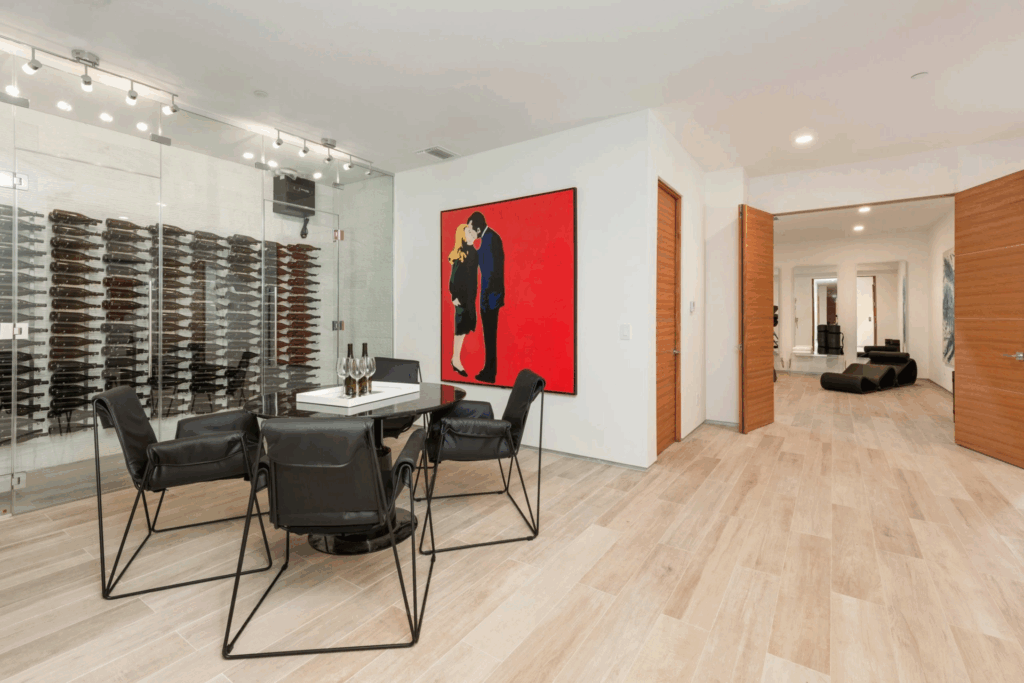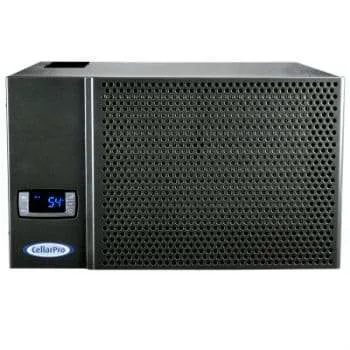For any wine enthusiast, building or converting a space into a wine cellar is a labor of love. But the heart of any proper cellar isn’t the racking or the lighting—it’s the cooling system. If you’re looking for a simple and effective solution, a self-contained cooling unit is often the top contender. But what exactly is it, and is it right for your collection?
Let’s uncork the details.
What is a Self-Contained Cooling Unit?
Imagine a refrigerator specifically designed for the size and style of a wine cellar. That’s the essence of a self-contained cooling unit, also known as a “through-the-wall” or “ductless” system.
As the name implies, all the essential components—the compressor, evaporator, condenser, and fans—are housed in a single, compact cabinet. This unit is installed through an exterior wall or in a pre-existing window, with its front (the cold side) facing your cellar and the back (the hot side) venting into another space, like a garage, closet, or the outdoors. It’s a truly all-in-one, independent cooling system.
How Does a Self-Contained Unit Work?
The magic of a self-contained cooling unit lies in its self-contained nature. It operates on a simple refrigeration cycle, similar to your household fridge:
Heat Absorption: Inside the cellar, a fan draws warm air over the cold evaporator coils. A refrigerant inside these coils absorbs the heat from the air.
Cool Air Discharge: The newly chilled and dehumidified air is then blown back into the cellar, lowering the ambient temperature to your desired set point (typically between 55-58°F).
Heat Expulsion: The refrigerant, now carrying the absorbed heat, travels to the compressor, where it is pressurized, becoming even hotter.
Heat Dissipation: This hot refrigerant then moves to the condenser coils on the exterior side of the unit. A second fan blows outside air over these hot coils, dissipating the heat into the adjacent room or outside.
The Cycle Repeats: The refrigerant cools down and returns to the evaporator coils to start the process all over again, maintaining a consistent and stable environment for your wine.
The Pros of a Self-Contained Cooling System
This plug-and-play approach offers some significant advantages, especially for certain cellar setups.
Ease of Installation: This self contained cooling system is the biggest benefit. With no need for complex ductwork or a separate remote condenser, installation is generally quicker and more affordable. It often requires just a correctly sized hole in the wall and a standard electrical outlet.
Cost-Effective: Both the initial purchase price and the installation cost are typically lower than split or ducted systems, making it a budget-friendly entry point for many collectors.
Perfect for Small to Medium Spaces: These self contained cooling units are ideal for cellars up to around 500 cubic feet (e.g., a closet, under-stairs space, or a small dedicated room).
Self-Contained Simplicity: If the unit ever needs service or replacement, everything is accessible from one location.
The Cons of a Self-Contained Cooling System
No system is perfect, and it’s crucial to understand the trade-offs.
Heat and Noise in Your Home: The unit expels heat and generates noise (from the compressor and fan) into the room where it’s venting. This can be undesirable if that space is a living area or bedroom.
Limited Capacity: They are not designed for large or well-insulated cellars. Attempting to cool too large a space will cause the unit to run constantly, leading to premature failure.
Aesthetics: The unit is visibly present inside your cellar, which can detract from a high-end, custom look you might be trying to achieve.
Potential for Reduced Efficiency: Because it expels heat into your home, it can slightly increase the cooling load on your home’s primary HVAC system during warmer months.
Is a Self-Contained Unit Right for Your Cellar?
A self-contained cooling unit is an excellent choice if:
Your cellar is small to medium-sized (under 500 cubic feet).
You are working with a limited budget.
The vented side can be in an unconditioned space like a garage, attic, or exterior wall where noise and heat are not a concern.
You value simplicity and easy installation.
However, for a large, professionally built cellar or one where silence and a seamless aesthetic are paramount, a ductless split system (with a quiet, remote condenser) or a ducted system is often a better, albeit more expensive, choice.
Ultimately, a self-contained cooling unit is the reliable workhorse of the wine cellar world. By understanding how it works and weighing its pros and cons, you can make an informed decision to ensure your prized bottles age gracefully in their perfect climate.






